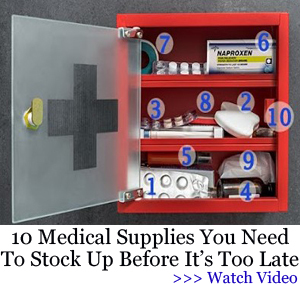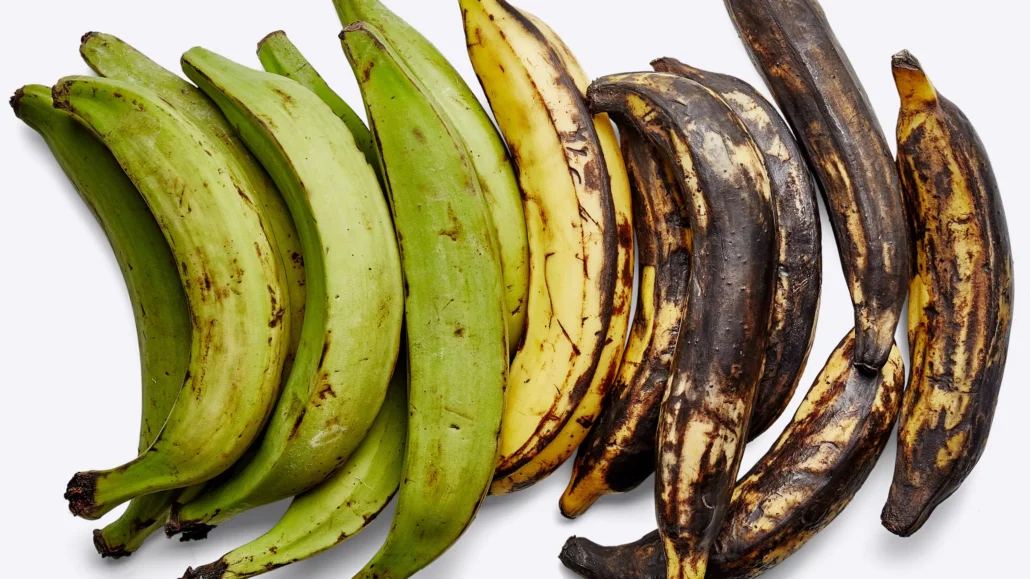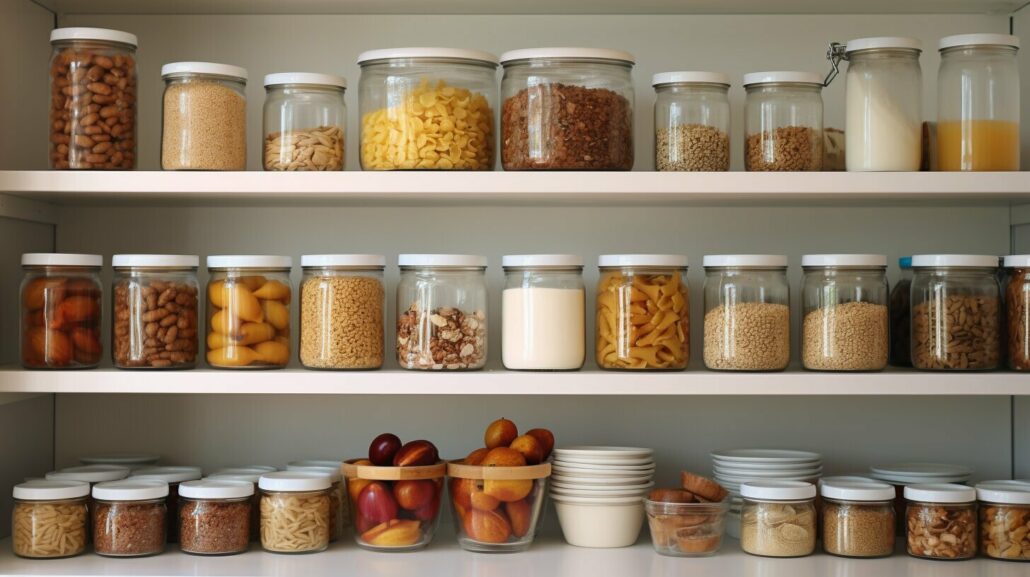Discover the 12 crucial steps you need to take to prep your own food and water for emergencies or self-sufficiency. In this food and water prep guide, I will provide you with a comprehensive DIY prepping plan that will help you become self-sufficient and prepared for any situation.
Key Takeaways:
- Meal planning and meal prepping are effective strategies for saving time and preparing healthy homemade meals.
- Consider factors such as time, money, taste/variety, and storage room when starting meal planning.
- Create a detailed meal plan to save time and energy by knowing in advance what meals will be prepared.
- There are different ways to meal prep, including make-ahead meals, batch cooking, individually portioned meals, and ready-to-cook ingredients.
- Choose the right number and variety of meals to provide nutrition and avoid monotony.
Understanding the Importance of Food and Water Prep
Before diving into the steps, it’s important to understand why food and water prep is crucial and how you can effectively store them for emergencies or self-sufficiency.
“In times of crisis, having a supply of food and water can make all the difference. Whether it’s a natural disaster or a personal emergency, being prepared ensures that you and your loved ones have access to essential resources. Food and water prep is not just for doomsday preppers; it’s a practical and responsible way to protect yourself and your family.”
Emergency food and water prepping involves stocking up on non-perishable food items and ensuring a safe and reliable water supply. By having a well-stocked pantry and a plan in place, you will be able to sustain yourself during unforeseen circumstances.
- Food Storage Tips: Store food in proper containers, such as airtight containers, to maintain freshness and prevent spoilage. Consider using BPA-free microwavable containers, freezer-safe containers, and leak-proof, compartmentalized containers for added convenience. Also, labeling your containers will help you keep track of expiration dates and organize your inventory.
- Water Storage Tips: Unopened commercially bottled water is the safest option for emergency water supply. However, if you decide to store water yourself, it is important to use food-grade water storage containers and clean them properly. Avoid using containers that cannot be sealed tightly, breakable containers, containers previously used for toxic substances, and plastic or cardboard bottles or jugs used for milk or fruit juices. Remember to regularly replace stored water to ensure its quality.
| Food Storage Containers | Water Storage Containers |
|---|---|
| Airtight containers | Food-grade water storage containers |
| BPA-free microwavable containers | Regular replacement of stored water |
| Freezer-safe containers | Containers that can be sealed tightly |
| Leak-proof, compartmentalized containers | Avoid breakable containers |
Proper Storage and Labeling
When it comes to food and water storage, proper labeling and regular inspections are essential. By labeling your stored items, you can easily identify their contents and expiration dates, enabling you to rotate and consume them before they go bad. It is also crucial to store your containers in a cool, dark place to maintain their quality and avoid exposure to sunlight or toxic substances.
By understanding the importance of food and water prep and following these storage tips, you can ensure that you and your family have the necessary resources to weather any emergency situation. Remember, being prepared is not just about planning for the worst; it’s about peace of mind and knowing that you are ready to tackle any challenges that may come your way.
Step 1: Assess Your Needs and Set Goals
The first step in prepping your own food and water is to assess your specific needs and set clear goals for your preparation efforts. This involves taking into account factors such as the size of your household, dietary restrictions, and potential emergencies you may encounter. By understanding your needs, you can determine how much food and water you need to stockpile and what types of supplies are necessary.
Creating a prepping checklist can be a helpful tool in this process. It allows you to list the essential items you need to acquire, ensuring you don’t overlook anything important. Consider including non-perishable food items, water storage containers, water purification methods, and any other supplies relevant to your specific circumstances.
It’s important to set realistic goals that align with your budget, available storage space, and personal preferences. By defining your goals, you can work towards them in a methodical and organized manner, which will ultimately lead to a more effective and successful prepping strategy.
Assessing Your Food and Water Requirements
When assessing your food and water needs, a useful guideline to follow is to have a minimum of three days’ worth of supplies for each member of your household. This includes both food and drinking water. However, it’s advisable to aim for a longer-term supply of at least two weeks if possible. This will provide a greater level of security in case of extended emergencies or disruptions.
Remember to take into consideration any specific dietary needs or restrictions you or your family members may have. This will ensure that the food you stockpile is suitable for everyone’s needs and preferences. Additionally, consider the daily water consumption per person, which is typically around one gallon (3.8 liters). Adjust this amount based on your climate, activity level, and individual requirements.
| Step 1: Assess Your Needs and Set Goals Checklist |
|---|
| Create a list of essential food items based on your dietary needs |
| Determine the amount of drinking water needed per person per day |
| Consider any special medical or dietary requirements |
| Evaluate the size of your household |
| Assess your available storage space |
| Set realistic goals based on your budget and resources |
Step 2: Create a Prepping Plan
To effectively prep your own food and water, it’s crucial to create a comprehensive prepping plan that takes into account factors like budget, storage space, and dietary requirements. A well-thought-out plan will not only ensure that you have the necessary supplies but also help you stay organized and focused throughout the prepping process.
When creating your prepping plan, start by assessing your budget. Determine how much you can allocate to food and water prepping and prioritize your purchases accordingly. Consider investing in essential supplies such as long-lasting food items, water storage containers, purification methods, and other prepping necessities.
Next, evaluate your available storage space. Depending on the size of your pantry, kitchen cabinets, or designated prepping area, you may need to make adjustments to accommodate your stockpile. Consider using shelves, stackable containers, or organizing systems to maximize storage efficiency.
Lastly, take into account your dietary requirements. Whether you have specific dietary restrictions or preferences, it’s important to include a variety of foods that meet your nutritional needs in your prepping plan. Make a list of meal options that you can rotate and modify as needed, ensuring a well-balanced and enjoyable supply of food and water.
| Factors to Consider: | Actions to Take: |
|---|---|
| Budget | Allocate funds for essential supplies and prioritize purchases. |
| Storage Space | Assess available storage and make necessary adjustments for your stockpile. |
| Dietary Requirements | Include a variety of foods that meet your nutritional needs in your prepping plan. |
By creating a prepping plan that considers budget, storage space, and dietary requirements, you can better prepare yourself for emergencies or self-sufficiency. This plan will serve as a roadmap to guide your prepping journey and ensure that you have a well-rounded and efficient food and water supply.
Step 3: Stock Up on Essential Supplies
Building a stockpile of essential supplies is a critical step in prepping your own food and water. By having these supplies on hand, you can ensure that you are prepared for emergencies or times of self-sufficiency. To help you get started, here are some key supplies you should consider:
| Food Supplies | Water Supplies |
|---|---|
| – Non-perishable food items (canned goods, dried goods, etc.) | – Bottled water (commercially bottled is recommended) |
| – Long-lasting food items (rice, beans, pasta, etc.) | – Water storage containers |
| – Cooking oil and spices | – Water purification methods (boiling, filtration, etc.) |
| – Snacks and comfort foods | – Water treatment chemicals |
| – Infant formula and baby food (if needed) | – Water storage accessories (funnels, pumps, etc.) |
| – Pet food (if applicable) | – Water testing kits (optional) |
Remember to consider the specific needs of your household when determining the quantities of supplies to stock up on. Having a well-rounded stockpile of food and water will ensure that you and your loved ones have the necessary resources during an emergency.
Don’t forget:
- Regularly check the expiration dates on your food supplies and rotate them to maintain freshness.
- Label your water storage containers with the date filled and ensure they are properly sealed.
- Periodically replace stored water to ensure its safety and quality.
- Store your supplies in a cool, dark place away from direct sunlight and any potential sources of contamination.
By taking the time to stock up on essential supplies, you can have peace of mind knowing that you are prepared for any situation that comes your way. So start building your stockpile today and be ready for whatever the future may bring.
Step 4: Prepping Your Pantry
A well-stocked pantry is a key component of food and water prepping. Discover how to organize and fill your pantry with essential non-perishable food items.
When it comes to prepping your pantry, organization is key. Start by taking inventory of your current supplies and identifying any gaps. Consider the dietary needs and preferences of your family members, as well as any special considerations for infants, elderly individuals, or those with dietary restrictions.
Next, create a comprehensive shopping list of non-perishable food items. These should be items that have a long shelf life and require minimal preparation. Consider stocking up on canned fruits and vegetables, beans, rice, pasta, oats, and dried goods such as nuts, seeds, and powdered milk. Don’t forget to include spices, condiments, and cooking oils to enhance the flavor of your meals.
| Non-perishable Food Items | Quantity |
|---|---|
| Canned fruits and vegetables | 20 |
| Beans (assorted varieties) | 10 pounds |
| Rice | 25 pounds |
| Pasta | 15 pounds |
| Oats | 10 pounds |
| Dried goods (nuts, seeds, powdered milk) | Assorted |
Once you have your shopping list, it’s time to organize your pantry. Consider investing in airtight containers to keep your food fresh and prevent pests. Label each container with the contents and expiration date to ensure proper rotation. Utilize shelf dividers or clear storage bins to categorize and separate different food groups.
Remember to regularly check and restock your pantry to maintain a sufficient supply of food. Keep an eye on expiration dates and consume items before they expire. Stay organized and keep your pantry clean to ensure the longevity and quality of your prepped food items.
Step 5: Water Purification Methods
Access to clean water is essential for survival. Learn about different water purification methods to ensure you have a safe water supply in emergencies or self-sufficiency.
When it comes to purifying water, there are several methods you can use to remove harmful contaminants and bacteria. Here are some commonly used water purification methods:
- Boiling: Boiling water is one of the simplest and most effective methods of purification. By bringing water to a rolling boil for at least one minute (or three minutes at higher altitudes), you can kill most types of bacteria, viruses, and parasites.
- Filtration: Water filters can remove impurities and particles from water, making it safe to drink. There are various types of filters available, such as carbon filters, ceramic filters, and reverse osmosis filters, each with their own level of effectiveness.
- Chemical treatment: Chemicals like chlorine dioxide tablets or iodine can be used to disinfect water and kill bacteria and viruses. Follow the manufacturer’s instructions for the correct dosage and treatment time.
- UV sterilization: UV sterilizers use ultraviolet light to kill or deactivate harmful microorganisms in water. This method is effective against bacteria, viruses, and protozoa.
It’s important to note that these methods may not remove certain chemicals or heavy metals from water, so it’s advisable to have multiple methods available. Additionally, always start with the cleanest water source possible and, if unsure, use multiple purification methods to ensure the highest level of safety.
| Water Purification Method | Pros | Cons |
|---|---|---|
| Boiling | Simple and effective | Requires fuel and time |
| Filtration | Can remove various impurities | Filters may need to be replaced |
| Chemical treatment | Lightweight and portable | May leave a residual taste |
| UV sterilization | Quick and effective | Requires batteries or power source |
Remember, access to clean water is crucial for your well-being in emergency situations. By understanding these water purification methods and having the necessary supplies, you can ensure a safe and reliable water source when needed most.
Step 6: Proper Food and Water Storage
Proper storage of food and water is vital for maintaining their quality and ensuring they remain safe for consumption. Whether you’re prepping for emergencies or simply trying to save time and money, following the best storage methods can make a significant difference. Here are some important tips to help you store your food and water effectively:
- Choose the right storage containers: Invest in airtight containers that are specifically designed for food storage. Look for containers that are BPA-free, microwavable, freezer-safe, and leak-proof. Additionally, consider using compartmentalized containers to keep different food items separate and prevent cross-contamination.
- Focus on food safety: When storing food, it’s crucial to cook, store, and reheat it at the correct temperatures. Cooked food should be cooled quickly and refrigerated within two hours to prevent bacterial growth. Label your containers with the date they were prepared to keep track of freshness and ensure you consume them within a safe timeframe.
- Consider convenience and portioning: Meal prepping becomes much easier when you have individual servings ready to go. Consider portioning your meals in advance to eliminate guesswork and save time during busy days. Use smaller containers or reusable silicone bags for meal portioning, and label them accordingly.
- Ensure proper water storage: Unopened commercially bottled water is the safest option for emergency water supply. However, if you decide to store your own water, use food-grade water storage containers and rinse them thoroughly before use. Avoid containers that cannot be tightly sealed, as well as breakable containers. Never store water in containers previously used for toxic substances. Plastic or cardboard bottles or jugs previously used for milk or fruit juices are also not recommended for long-term water storage.
Detailed Food and Water Storage Guidelines
In addition to the general tips mentioned above, here are some specific guidelines to keep in mind when storing your food and water:
| Food Storage Guidelines | Water Storage Guidelines |
|---|---|
| Store dry foods in a cool, dry place away from direct sunlight. | Store water containers in a cool, dark place to prevent exposure to sunlight, which can degrade the quality of the water. |
| Avoid storing food near strong-smelling items, as food easily absorbs odors. | Label stored water containers with the date they were filled or replaced. Regularly rotate stored water by using and replacing it every six months. |
| Consider using oxygen absorbers or vacuum sealers for long-term storage of dry goods. | Use food-grade water storage containers and avoid using containers that may leach chemicals into the water over time. |
| Keep an inventory of your stored food and regularly check for expiration dates. | Regularly inspect water containers for cracks, leaks, or signs of contamination. Replace damaged containers immediately. |
Following these guidelines will help ensure that your stored food remains fresh and your water supply remains safe for consumption in any situation. By taking the time to properly store your food and water, you can be confident in your preparedness and enjoy peace of mind knowing you have essential supplies readily available.
Step 7: Labeling and Rotation
Labeling and rotation are key practices to maintain the freshness and quality of your stored food and water. Learn how to effectively label and rotate your supplies to maximize their shelf life.
When it comes to food storage, proper labeling is essential. Take the time to clearly label each container with the contents and the date it was stored. This will help you easily identify what you have and how long it has been stored. Additionally, consider using color-coded labels or markers to further simplify the organization of your supplies.
Rotation is equally important as it ensures that you are consuming the oldest items first and reducing the risk of food waste. Establish a system where you place newly purchased or prepared items at the back of your storage and move older items to the front. This way, you will always be using the oldest items first and maintaining a fresh supply of food.
Example: Food Rotation Schedule
| Item | Quantity | Date Stored |
|---|---|---|
| Rice | 5 lbs | April 1, 2023 |
| Pasta | 3 lbs | March 15, 2023 |
| Canned Beans | 10 cans | February 28, 2023 |
Regularly check your food and water supplies for expiration dates and signs of spoilage. If any items are approaching their expiration date or show signs of deterioration, it’s time to replace them. By staying vigilant and regularly inspecting your supplies, you can ensure that your food and water storage remains safe and effective.
Remember to store your containers in a cool, dark place away from direct sunlight or areas with toxic substances. This will help maintain the integrity of the containers and preserve the quality of your stored food and water. Avoid using containers that cannot be sealed tightly, breakable containers, or those previously used for toxic substances.
Example: Proper Water Storage
| Type of Container | Recommended | Not Recommended |
|---|---|---|
| Food-grade water storage containers | ✅ | ❌ |
| BPA-free plastic or stainless steel | ✅ | ❌ |
| Containers previously used for toxic substances | ❌ | ✅ |
By implementing proper labeling and rotation practices, you can ensure that your stored food and water remain fresh, safe, and suitable for consumption during emergency situations or for your self-sufficiency needs.
Step 8: Regular Inspections and Replacements
Regular inspections and replacements are crucial to maintain the quality and safety of your stored food and water. It’s important to stay vigilant and ensure your supplies are still viable in case of an emergency. By following a few simple guidelines, you can stay prepared and confident in the reliability of your prepping efforts.
Inspecting Your Supplies
Inspecting your stored food and water should be done on a regular basis to identify any signs of spoilage, damage, or expiration. A good rule of thumb is to check your supplies every 6 to 12 months, depending on the shelf life of the items you have stored. Look for any signs of leakage, bloating, off-color, or unusual odors in your food containers. For water, check for any discoloration, sediment, or strange taste. If you come across any of these indicators, it’s important to discard and replace the affected items.
Replacing Expired Items
It’s essential to replace expired items promptly to maintain freshness and nutritional value. Keep track of the expiration dates of your stored food and water, and make a note of when items need to be replaced in your prepping plan. By staying organized and double-checking your supplies, you can ensure that you always have a reliable stockpile available in case of an emergency.
Storing Containers Properly
In addition to regular inspections and replacements, storing your food and water containers properly is crucial for optimal preservation. Find a cool, dark place to store your supplies, away from direct sunlight and any potential sources of contamination. Properly sealed and airtight containers are recommended to prevent spoilage and maintain the freshness of your stored items. Remember to label your containers and keep a record of the dates when items were stored and need to be replaced.
By following these practices, you can ensure that your stored food and water remain safe, reliable, and ready to use during any emergency situation. Regular inspections and replacements, combined with proper storage techniques, are essential for maintaining the quality and longevity of your prepping supplies.
| Inspecting Your Supplies | Replacing Expired Items | Storing Containers Properly |
|---|---|---|
| Check for signs of spoilage | Monitor expiration dates | Find a cool, dark storage space |
| Look for leakage or unusual odors | Replace items promptly | Use properly sealed containers |
| Check for discoloration in water | Keep a record of storage dates | Avoid direct sunlight or contamination |
Step 9: Storing Containers and Location
Properly storing your food and water containers is essential for their longevity and safety. Learn how to choose the right containers and find the ideal storage location for your supplies.
When it comes to choosing containers for food and water storage, there are a few key factors to consider. First, opt for airtight containers that will help maintain the freshness and quality of your provisions. Look for BPA-free microwavable containers that are safe for food storage and reheating. Freezer-safe containers are also important if you plan to freeze any meals or ingredients. Leak-proof, compartmentalized containers can be a great option for portioned meals and snacks, helping you stay organized and easily grab what you need.
Food safety is crucial, so it’s important to know how to properly store and handle your meals. Cook foods thoroughly and store them in appropriate containers at the correct temperatures to prevent spoilage and bacterial growth. When reheating leftovers, make sure to heat them to the recommended temperature to ensure they are safe to eat. Following these guidelines will help keep your meals delicious and safe to consume.
| Container Type | Features |
|---|---|
| Airtight Containers | Preserves freshness and quality |
| BPA-free Microwavable Containers | Safe for food storage and reheating |
| Freezer-safe Containers | Allows for freezing of meals or ingredients |
| Leak-proof, Compartmentalized Containers | Convenient for portioned meals and snacks |
When it comes to storing your containers, finding the ideal location is equally important. Choose a cool, dark place that is away from direct sunlight and free from toxic substances. Avoid storing containers in areas that are prone to extreme temperature fluctuations, as this can affect the quality and longevity of your stored food and water. Remember to properly label your containers, indicating the contents and the date of storage, to help you keep track of freshness and rotation.
By following these tips, you can ensure that your food and water containers stay in optimal condition, providing you with safe and nourishing provisions during emergencies or whenever the need arises.
Conclusion
By following the 12 essential steps to prepping your own food and water, you can empower yourself to become self-sufficient and prepared for any emergency situation. Start your prepping journey today and ensure the safety and well-being of yourself and your loved ones.
Meal planning and meal prepping are effective strategies for busy individuals who want to save time and enjoy healthy homemade meals. When starting your meal planning journey, it’s important to consider factors such as time availability, budget, taste preferences, and storage space. Creating a detailed meal plan can help you save time and energy by knowing in advance what meals will be prepared.
There are different ways to approach meal prepping, including make-ahead meals, batch cooking, individually portioned meals, and ready-to-cook ingredients. It’s important to choose the right number and variety of meals to provide proper nutrition and avoid monotony. Tips to cut down on cooking time include sticking to a consistent schedule, selecting recipes that complement each other, organizing prep and cook times, and making a shopping list.
Proper storage containers play a crucial role in preserving the quality of your prepped meals. Using airtight containers, BPA-free microwavable containers, freezer-safe containers, and leak-proof, compartmentalized containers can make a significant difference. Food safety is also essential, so make sure to cook, store, and reheat foods at the correct temperatures.
For emergency water storage, unopened commercially bottled water is recommended as the safest option. However, if you’re planning to store water yourself, it’s important to use food-grade water storage containers and properly clean and sanitize them. Avoid using containers that cannot be sealed tightly, breakable containers, containers previously used for toxic substances, and plastic or cardboard bottles or jugs used for milk or fruit juices. Proper labeling, regular replacement of stored water, and storing containers in a cool, dark place are also important considerations.
FAQ
Q: What is meal planning?
A: Meal planning is the process of deciding in advance what meals you will prepare for a specific period of time. It involves creating a detailed plan that includes the recipes, ingredients, and quantities needed for each meal.
Q: Why is meal planning important?
A: Meal planning is important because it saves time and energy by knowing in advance what meals will be prepared. It also helps in budgeting, reduces food waste, and promotes healthier eating habits.
Q: What are the different ways to meal prep?
A: There are different ways to meal prep, including make-ahead meals, batch cooking, individually portioned meals, and ready-to-cook ingredients. It’s important to choose the method that works best for your schedule and goals.
Q: How can I save time on meal prep?
A: To save time on meal prep, stick to a consistent schedule, pick the right combination of recipes, organize prep and cook times, and make a shopping list. This will help streamline the process and make it more efficient.
Q: What kind of containers should I use for meal prep?
A: It’s important to choose proper storage containers, such as airtight containers, BPA-free microwavable containers, freezer-safe containers, and leak-proof, compartmentalized containers. These containers will help preserve the quality and freshness of your meals.
Q: How should I store and reheat my prepped meals?
A: When storing prepped meals, make sure to follow proper food safety guidelines. Store and reheat foods at the correct temperatures to avoid the risk of foodborne illnesses. Use microwave-safe or oven-safe containers when reheating meals.
Q: What is the safest way to store water for emergencies?
A: Unopened commercially bottled water is recommended as the safest emergency water supply. If you are preparing your own stored water, use food-grade water storage containers and clean and sanitize them properly before filling them up.
Q: What containers should I avoid using for water storage?
A: Avoid using containers that cannot be sealed tightly, breakable containers, containers previously used for toxic substances, and plastic or cardboard bottles or jugs used for milk or fruit juices. These containers may contaminate the water.
Q: How should I label and rotate my stored food and water?
A: Labeling and rotation are important for proper food and water storage. Label items with expiration dates and use a rotation system to consume the oldest items first. This will help prevent wastage and ensure the freshness and safety of your supplies.
Q: How often should I inspect and replace my stored food and water?
A: Regular inspections are important to check for any signs of spoilage or damage. It is recommended to inspect your supplies at regular intervals and replace them as needed to ensure their quality and effectiveness.
Q: Where should I store my food and water containers?
A: Store your food and water containers in a cool, dark place that is free from toxic substances. Avoid storing them in direct sunlight or areas with chemicals or other hazardous materials that may contaminate the supplies.









